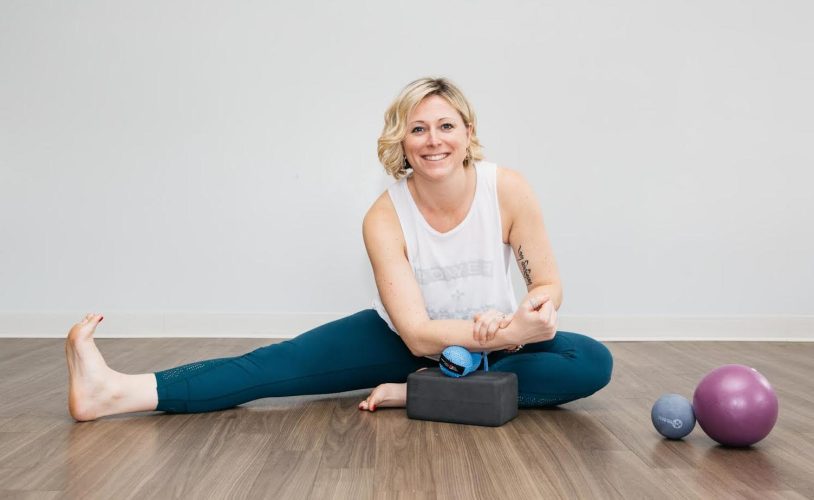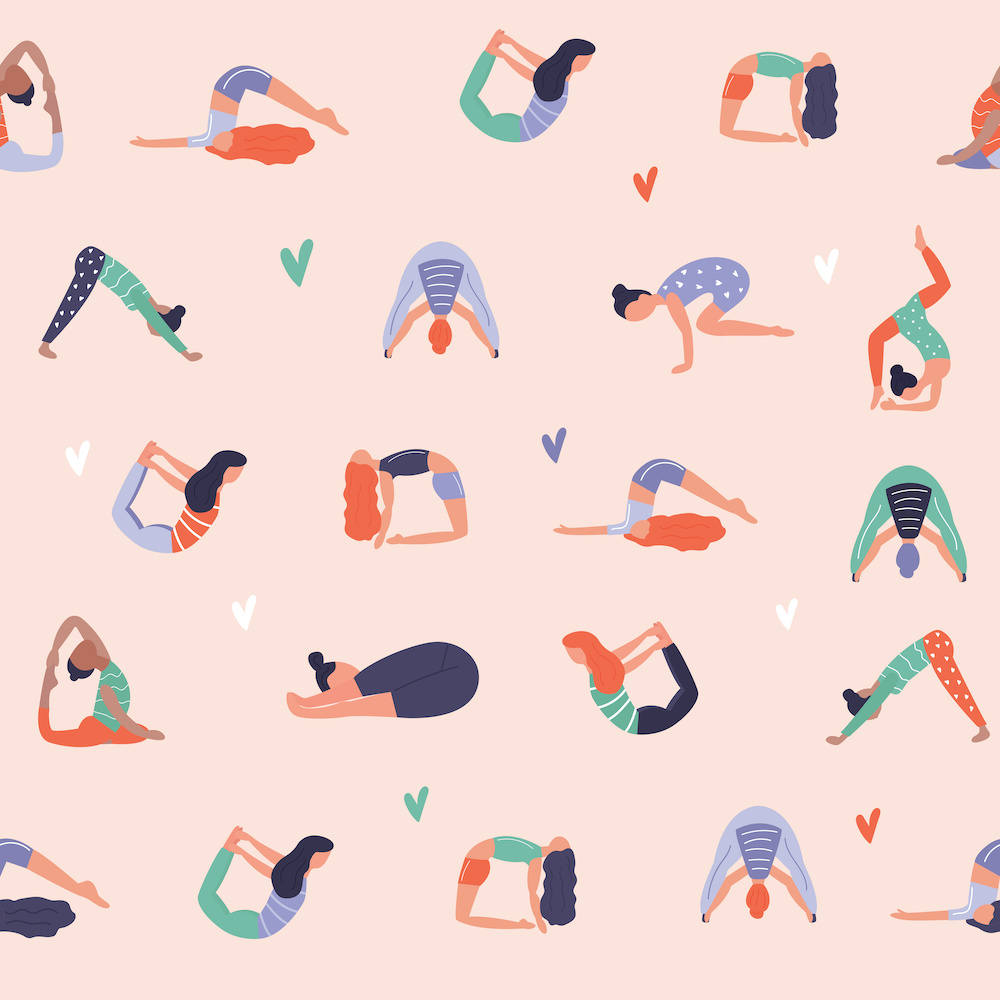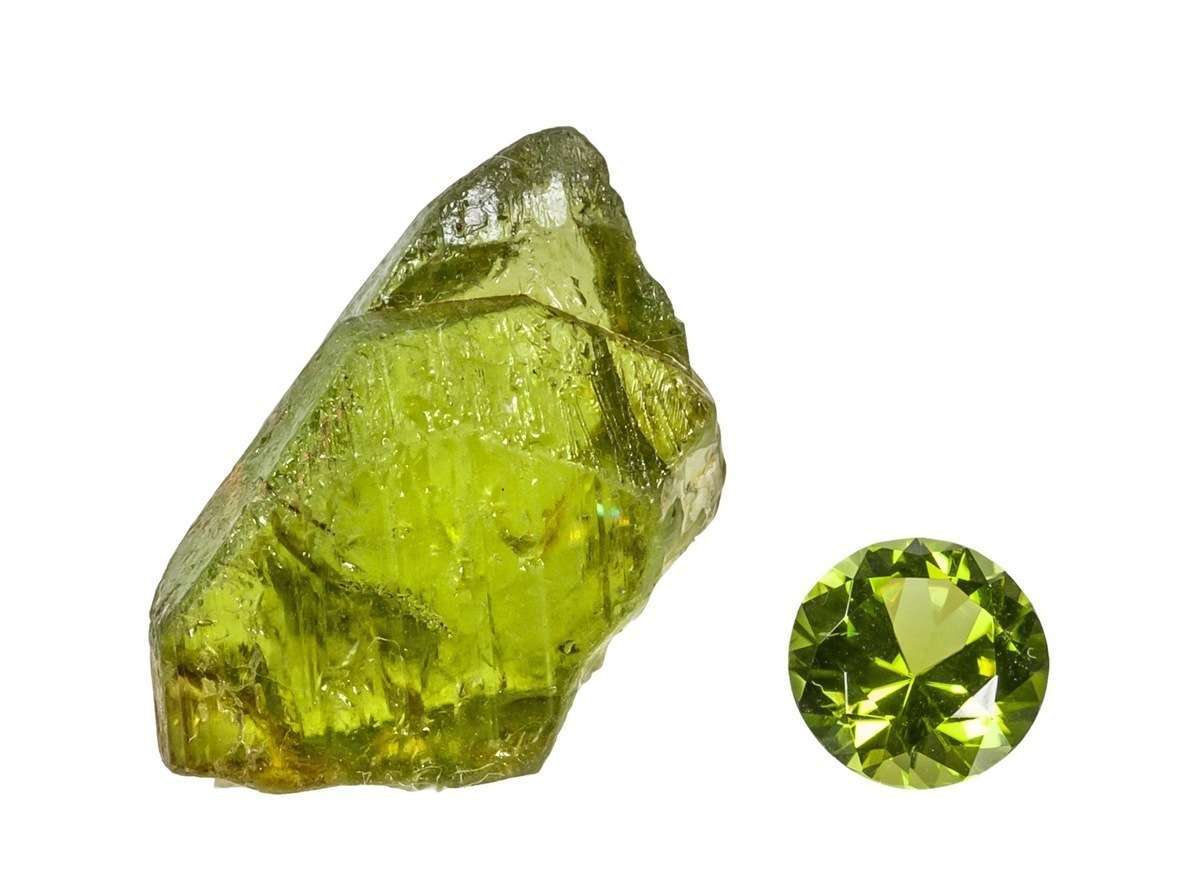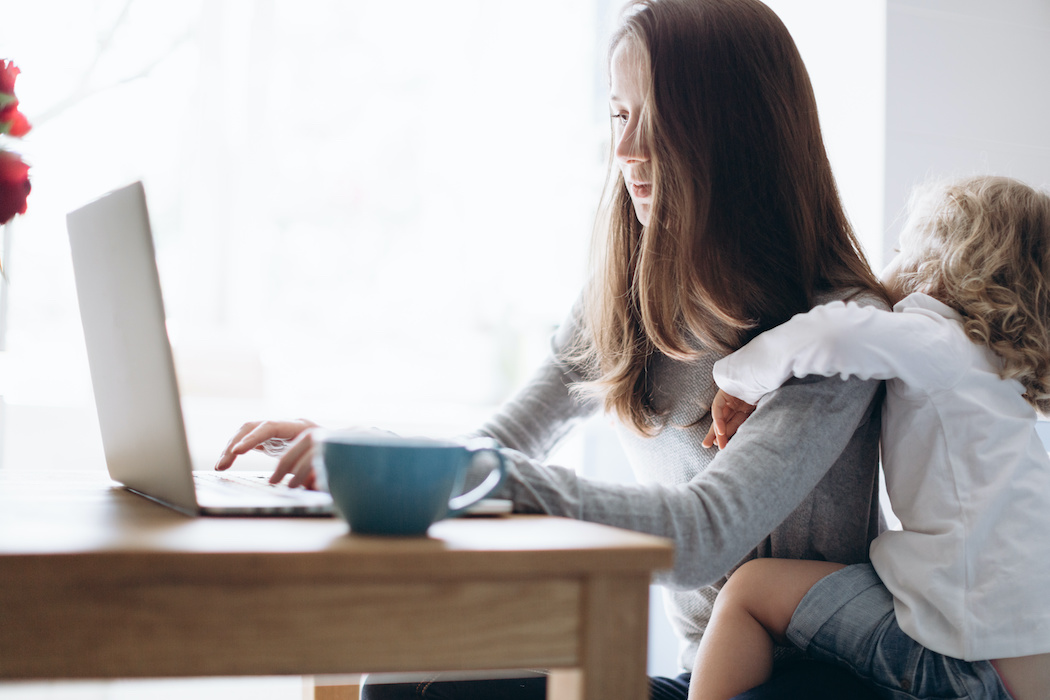Last month, we revealed a lot of information about the psoas and its propensity for low back pain, poor respiration patterns, compromised backbends, and more. This month, we look at muscles that move the body in an opposing direction from the psoas: the glutes.
WHAT DO THEY DO AND WHY DO THEY MATTER?
The glutes are a group of muscles located on your backside. Each cheek (so to speak) has three gluteus muscles working both independently, and as a team, to help you extend, rotate, abduct, and, in certain cases, flex the hip joint. Unfortunately, due to sheer lack of use (ahem, excessive sitting), the glutes can end up confused. Confused glutes may not fully or accurately fire, meaning the way you walk, run, lunge, and squat – even the way you get up from the couch after a Netflix marathon – could be putting undue strain on other areas of the body.
In her book Move your DNA, Katy Bowman states, “Since we have spent so much time sitting, and because so much of our exercise time is also spent in hip flexion, the mass creating the length of muscles connecting the thigh to the pelvis and the thigh to the trunk has decreased. Most of us no longer have the necessary muscle length (hip flexors) or strength (glutes and hamstrings) to move each thigh behind us with ease…our walking has become a series of complex falls masking a multitude of tiny movements, and actively wear(s) through our body parts at an accelerated rate.”
While Bowman is helping us understand a more systemic view of body mechanics and solutions, it’s important to realize that not regularly firing the glutes by simply sitting less and walking more has created a major imbalance at an insanely important junction of the body. The hips are (in essence) the highway between the upper and lower halves of the body: a highway that is clearly meant to have a regular and diverse diet of movement.
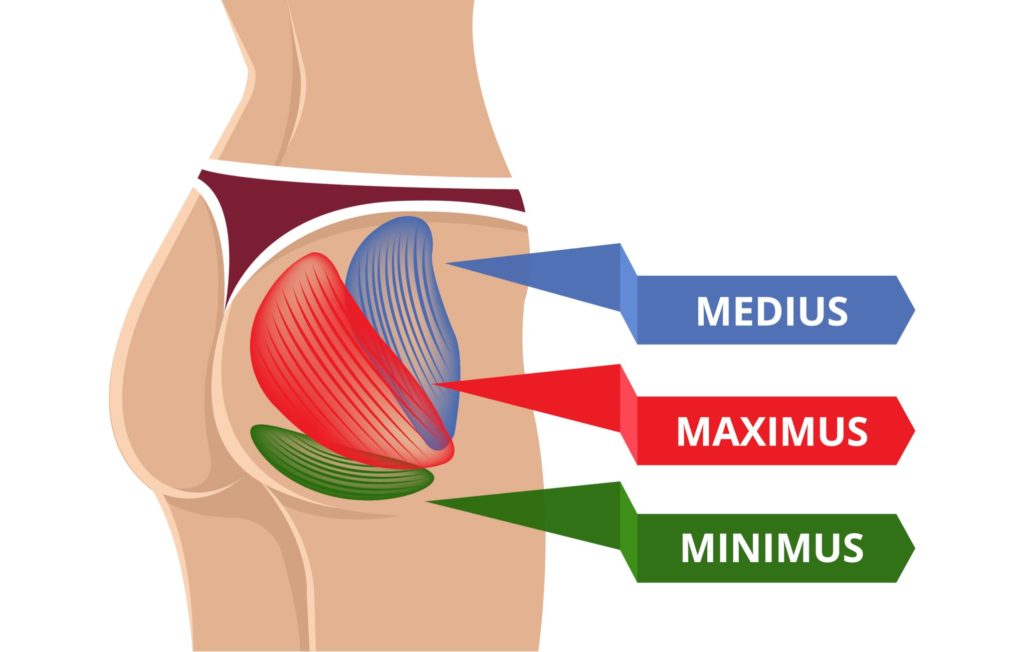
WHERE THEY ARE & WHAT THEY DO
- Gluteus Maximus
- What it is: the “big guns” that cover most of your backside and give it shape
- What it does: hip extension, external rotation, abduction, adduction (lower fibers)
- Gluteus Medius
- What it is: think of this a little more as the “side cheek” region
- What it does: abduct (all fibers), flex (anterior fibers), internally rotate (anterior fibers), extend (posterior fibers), externally rotate (posterior fibers)
- Gluteus Minimus
- What it is: this deep-set rebel lies beneath both of its brothers and does the opposite actions of the other two
- What it does: abduction, internal rotation, flexion
Clear as mud, right? What’s important to understand is that not only can these muscles work as a team, but different areas of the individual muscles can also move the body in different ways. With such a complex and sophisticated job to do, do you want your glutes asleep at the wheel?
WAKING UP THE GLUTES
- ACTIVATE
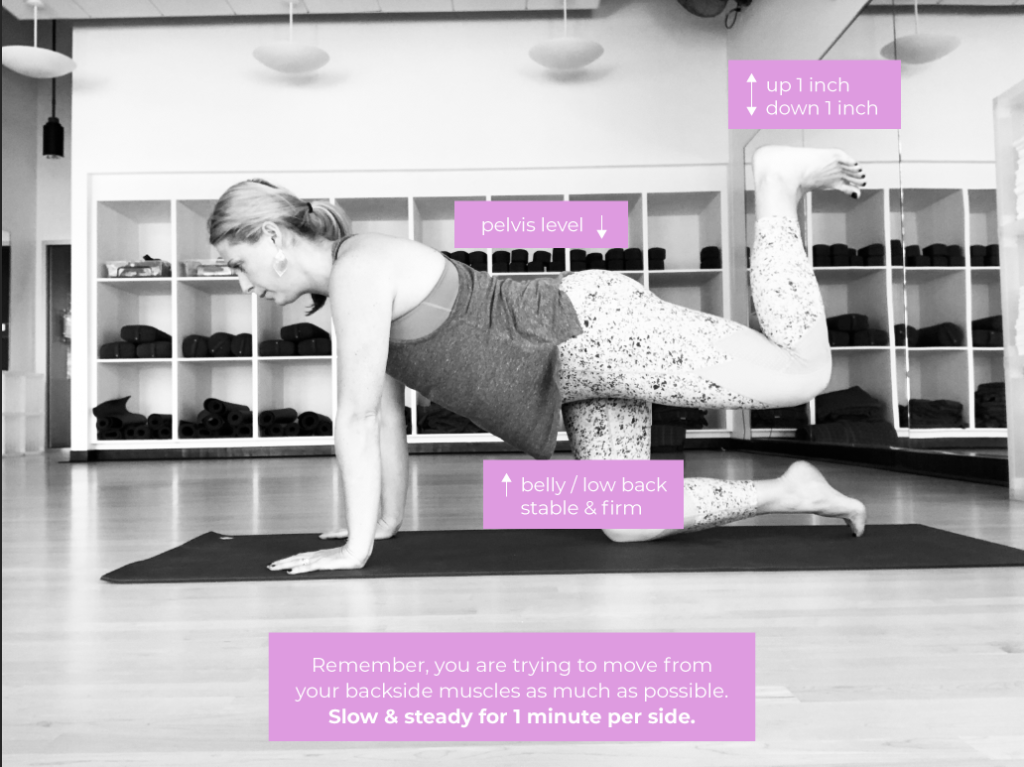
- Table Heel Lifts: With your knee bent 90 degrees and thighs parallel to the floor, imagine you are stamping a full footprint onto something that is only one inch above starting position. Go up an inch and down an inch for one to two minutes. Do this slowly, and minimize translation or movement in the torso, belly, and low back. Do this on both sides.
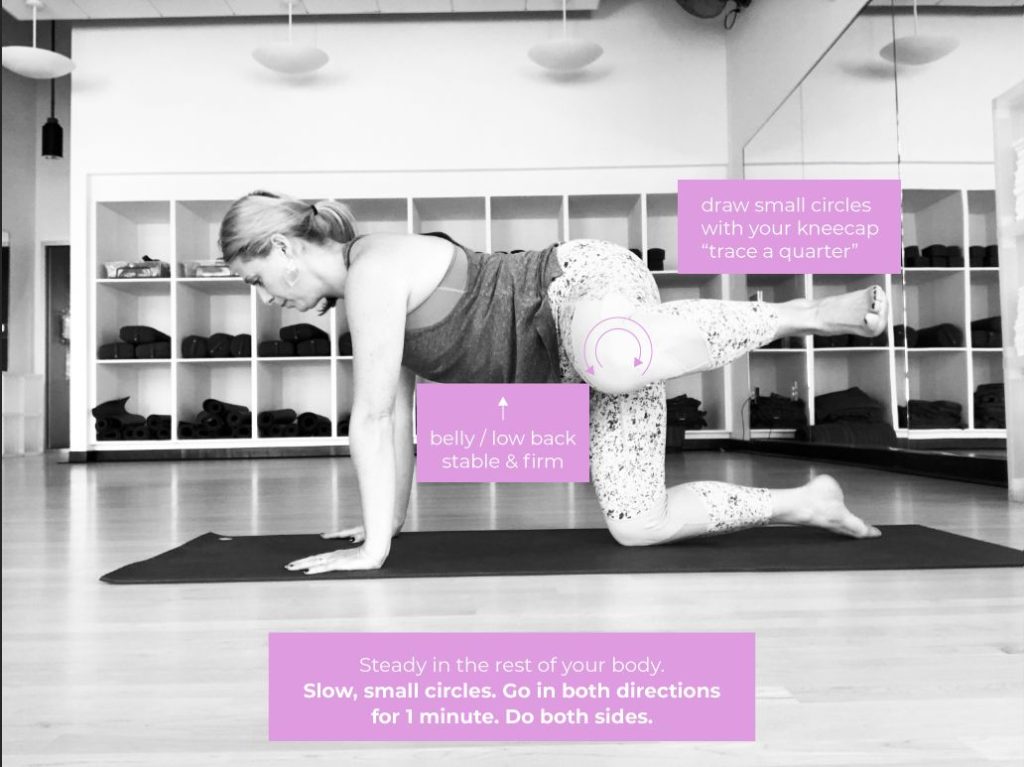
- Table Knee Rotations: Starting in tabletop position, fire hydrant one of your legs to the side. Try not to tip your body in the other direction to compensate; stay as level as possible at the back of your pelvis. Imagine tracing a quarter with your knee cap. Go slowly in both directions for 30 seconds, then repeat on the other leg.
- STRETCH
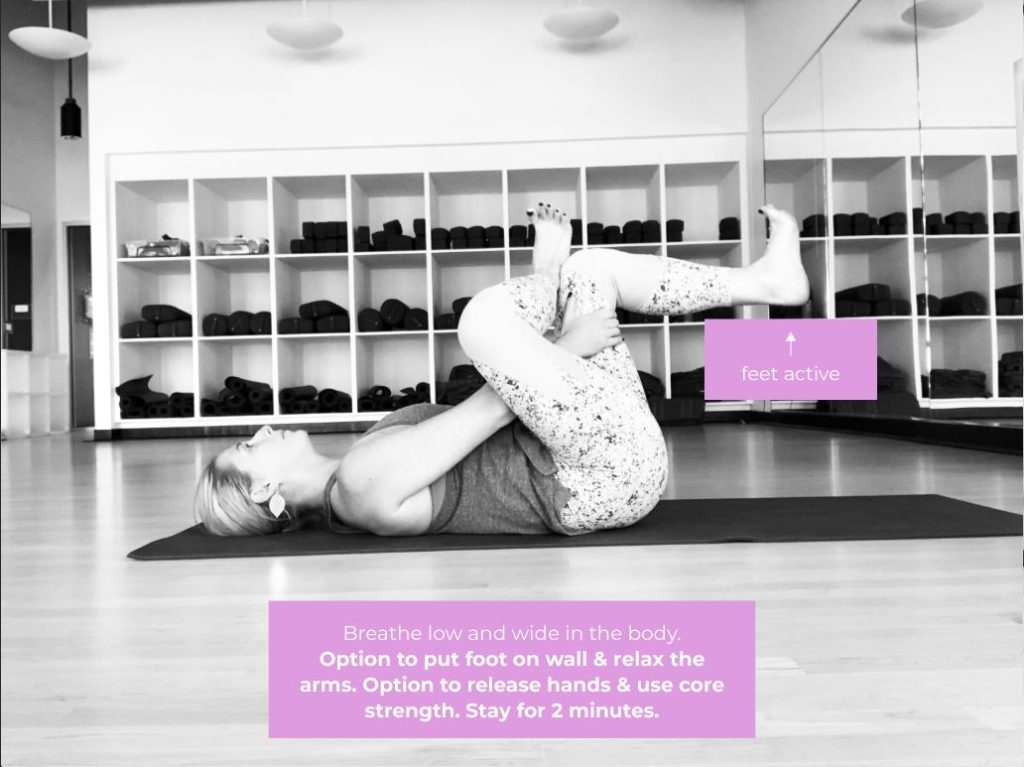
- Figure Fours: Lying on your back, bring your right ankle to cross your left knee. Interlace your hands behind the left thigh, and gently draw the leg situation toward your body. Keep your feet active like you’re standing on them, and send your breathing deep into your pelvis. Stay for one to two minutes, then repeat on the other side.
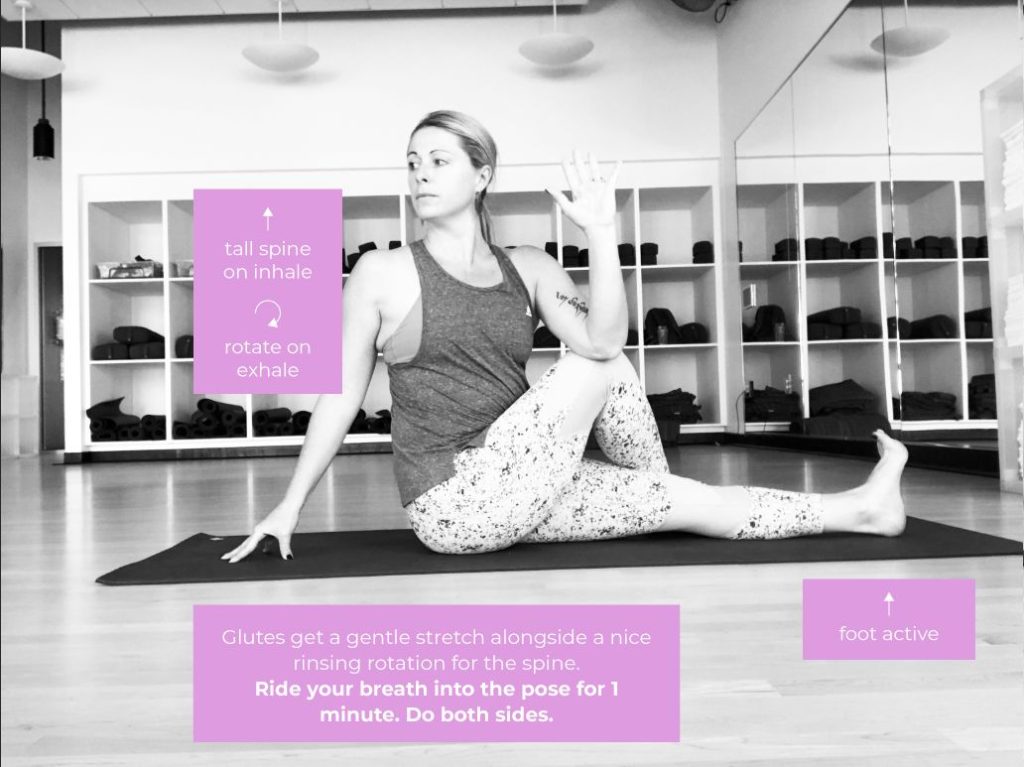
- Seated Twists: Start seated with both legs out in front of you. Bend your right knee in, then see if you can step your right foot to the outside of your left knee. Turn your torso to the right, and imagine twisting your belly button into your inner right thigh and spiraling the spine up from there. You can put your right hand behind you on the ground and your left hand, or elbow, outside the right knee for leverage. Stay for one to two minutes, then switch sides.
- ROLL:
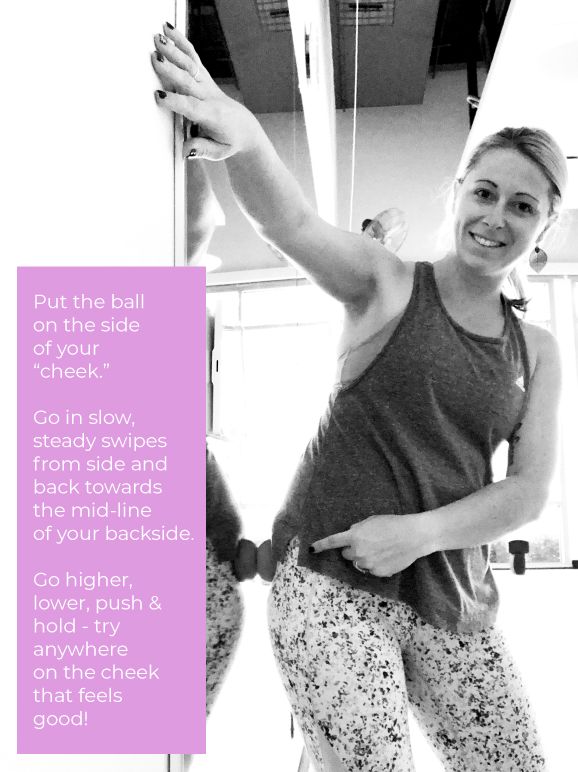
- Comb the Glute Tissues: Take a single ball and stand next to a wall. Position the ball on the side cheek (where the outer edge of a jean pocket might be). Press in firmly, and slowly drag the ball from the side of your buttocks to the middle of your backside. When you get there, either use your hand to move the ball to the side, or lightly scroll the ball back, keeping a connection to the wall. Think of the goal here as “moving the butt back onto the butt,” as opposed to smushed off to the sides from too much sitting. Experiment with combing the tissues high on the cheek, as well as in the middle and lower regions, and see where any interesting or sensitive feelings arise.
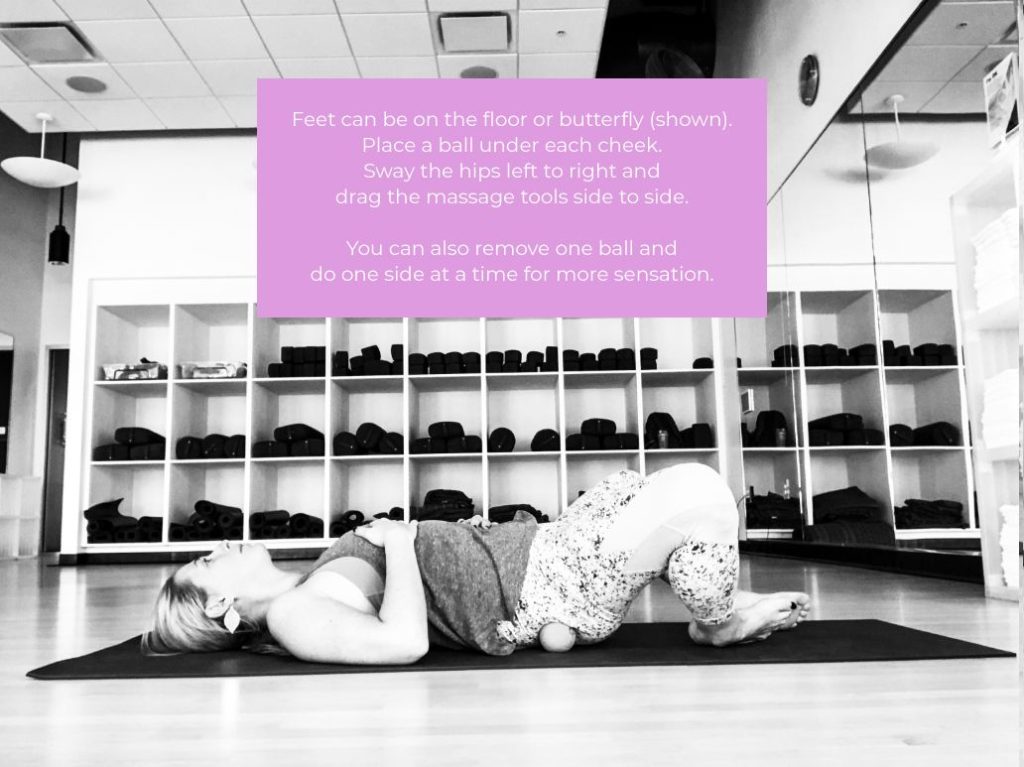
Tune-Up Ball Massage: Lie on your back. Take two balls of equal size, lift your hips, and place one on either side of the top of the bum “crack,” and rest your hips down on the balls. You should be on tissue here, not bone. Inhale and contract your backside muscles, exhale and relax them. Do this slowly, letting the balls sink deeper with every exhale. After five to 10 rounds, remove the right ball and put the right foot on the floor. Drag the left ball around and explore side to side movements, rocking in place in an almost circular-gyrating motion anywhere on the cheek. Do this on both sides.

